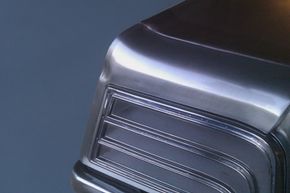As far as body damage goes, shallow dents are really no big deal. They affect the outermost layer of the car only and their negative repercussions are mostly aesthetic. That is, of course, assuming the impact was soft enough that the paint remained intact -- and that's the assumption we'll be working with for the rest of this article. If your car's paint was chipped or cracked as a result of whatever unfortunate incident occurred, it's not a candidate for paintless dent removal. (Paint repairs are a lot more involved, and can become much worse if the exposed metal is not fixed quickly.) It's not unusual to get dents that don't damage the paint surface, because modern automotive paints are formulated to be extremely hard and resilient [source: Allen].
Like most car repairs, you have two options: Bust out your toolbox or hire a pro. This job will require special tools, although they aren't expensive. At least at first, that is ... and assuming you use them right. But if you're the type who regularly dings up the family car or has bad luck with stray shopping carts in parking lots, learning to perform paintless dent removal might be worth the investment in time and money. Maybe you'll even find out you've got "the magic touch" with sheet metal.
Advertisement
Who knows? Maybe you'll get so good you can moonlight as a mobile paintless dent removal technician, showing off your newly-flawless ride to prospective customers. That's right -- a lot of paintless dent removal pros will come right to your door and perform their metal magic in your very own driveway. That's awfully tempting, isn't it? Avoiding the stress and hassle of taking your car to the body shop. But if it's so simple that a pro can do it with portable equipment, right out in the open ... well, surely it can't be that difficult for you, a first-timer, right?
As you'll see, making the right decision about hiring a pro to do the job or tackling this one yourself can depend on several factors. Don't start hammering away at your dented hood and fenders just yet.
Advertisement



